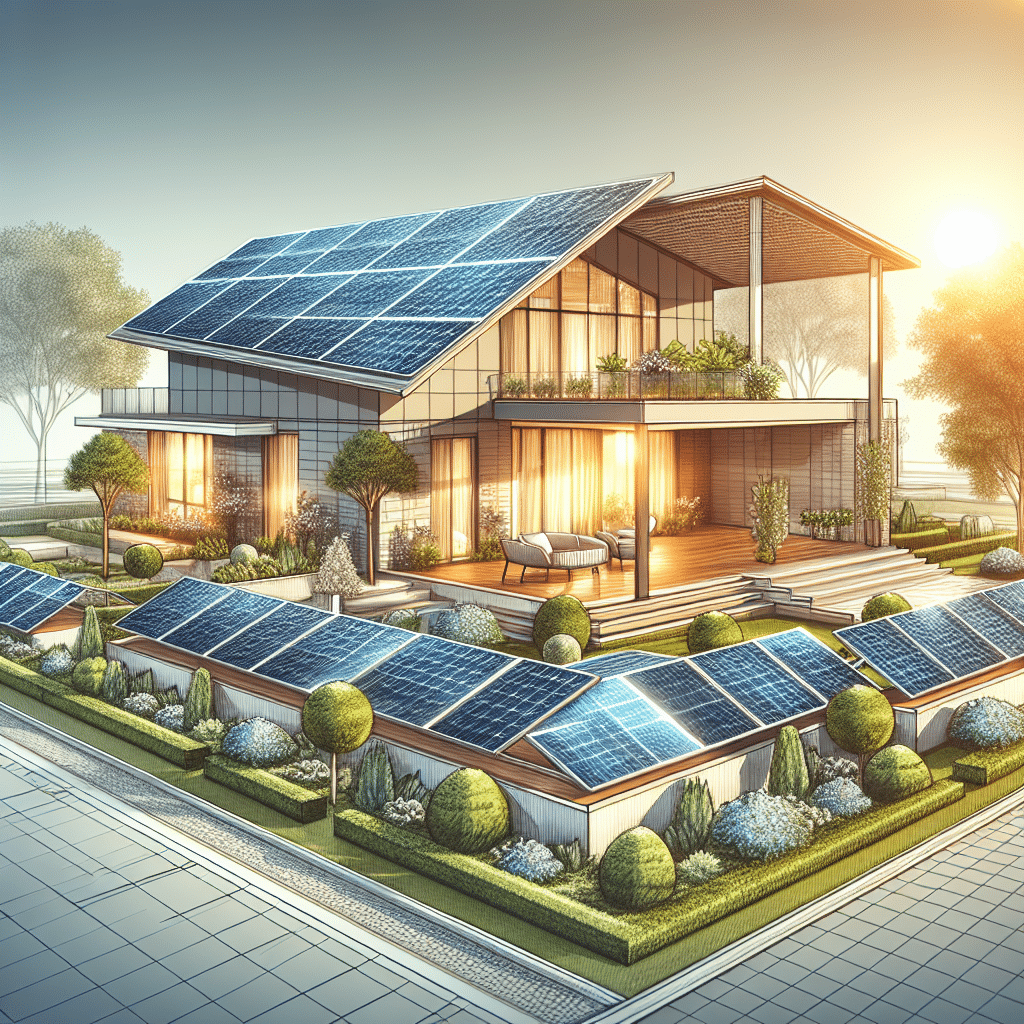Understanding Solar Panels: The Future of Energy-Efficient Homes in 2025
What Are Solar Panels?
Solar panels are devices that convert sunlight into electricity. They consist of photovoltaic (PV) cells, typically made from silicon, which generate electrical energy when exposed to sunlight. As energy efficiency becomes increasingly critical, solar panels are gaining popularity among homeowners seeking sustainable solutions for their energy needs.
Types of Solar Panels
In 2025, the market offers three primary types of solar panels:
-
Monocrystalline Panels: These are made from a single crystal structure and are known for their high efficiency and sleek appearance. Their efficiency rating typically ranges from 15% to over 22%. This type is ideal for homeowners with limited roof space.
-
Polycrystalline Panels: Made from multiple crystal structures, polycrystalline panels offer a more budget-friendly option. They have lower efficiency ratings (around 13% to 16%), making them suitable for those who have ample space for installation.
-
Thin-Film Panels: These are lightweight and flexible, made by applying a thin layer of photovoltaic material to a substrate. While they are less efficient (approximately 10% to 12%), they are easier to install in unique configurations.
Benefits of Solar Panels
-
Cost Savings: By harnessing solar energy, homeowners can significantly reduce their electricity bills. In 2025, advancements in technology and government incentives are expected to lower installation costs and improve returns on investment.
-
Environmental Impact: Solar panels produce clean, renewable energy, reducing reliance on fossil fuels. This not only leads to a decrease in greenhouse gas emissions but also diminishes the carbon footprint of households.
-
Energy Independence: With solar panels, homeowners can generate their own electricity, reducing dependency on the grid. Battery storage solutions are becoming increasingly popular, allowing users to store excess energy for use during cloudy days or at night.
-
Value Addition to Property: Homes equipped with solar energy systems are often perceived as more valuable by potential buyers. The growing awareness of sustainability makes solar panels an attractive feature for eco-conscious buyers.
Installation Process
The installation of solar panels involves several key steps:
-
Site Assessment: A professional installer evaluates the property to determine sunlight exposure, roof size, and the structural integrity of the installation surface.
-
System Design: Based on the assessment findings, a solar power system is designed to meet the homeowner’s energy needs, including panel placement and inverter selection.
-
Permitting: Once the design is finalized, homeowners must obtain necessary permits from local authorities to ensure compliance with regulations.
-
Installation: A team of professionals installs the solar panels, inverters, and any necessary electrical equipment. The installation typically takes one to three days, depending on the system size.
-
Inspection: After installation, a thorough inspection is conducted to ensure all components are functioning correctly and safely.
Maintenance and Care
Solar panels require minimal maintenance. Homeowners should perform regular checks to ensure the panels remain clean and free of debris. Annual professional inspections are recommended to identify any potential issues early on. Most solar panels come with warranties ranging from 20 to 25 years, ensuring long-term reliability.
The Role of Battery Storage
In 2025, the integration of battery storage systems is crucial for maximizing the benefits of solar panels. Batteries such as lithium-ion units store excess solar energy generated during the day for use when sunlight is unavailable. This capability not only enhances energy independence but also provides a reliable backup during outages.
Financial Incentives
Government incentives for solar energy are expected to remain robust in 2025. Homeowners may qualify for tax credits, rebates, and low-interest loans, making the transition to solar energy more affordable. Additionally, many utility companies offer net metering, allowing homeowners to sell excess power back to the grid, further enhancing cost savings.
Conclusion: Impacts on the Energy Market
As technology advances, solar panels will continue to evolve, becoming more efficient, affordable, and accessible. In 2025, the increasing adoption of solar energy systems is expected to lead to significant changes in the energy market, driving greater investments in renewable energy sources and innovations. By embracing solar energy, homeowners contribute to a sustainable future while reaping substantial economic benefits.
Choosing the Right Installer
Finding a qualified solar panel installer is critical for ensuring a successful installation and optimal system performance. Homeowners should:
- Seek local, licensed installers with solid reputations.
- Check reviews and references to gauge reliability and quality of service.
- Compare quotes from multiple providers to ensure competitive pricing and comprehensive service offerings.
- Inquire about warranty options, ongoing maintenance, and customer support.
Energy Efficiency Certifications
In 2025, various energy efficiency certifications will help homeowners identify energy-efficient products, including solar panels. Certifications such as ENERGY STAR and LEED encourage sustainable practices and help homeowners make informed decisions regarding their solar investments.
Future Trends in Solar Technology
Emerging technologies in 2025 aim to further enhance solar energy efficiency and integration:
-
Building-Integrated Photovoltaics (BIPV): These products seamlessly integrate solar technology into building materials, such as windows and roofing, without compromising aesthetics.
-
Solar Tracking Systems: These systems alter the position of solar panels throughout the day to follow the sun’s path, potentially increasing energy production by up to 25%.
-
Smart Inverters: Advanced inverters equipped with smart technology can optimize energy harvest, monitor system performance, and enhance energy management.
-
Recycling Initiatives: As the demand for solar panels grows, so does the focus on recycling old panels. By 2025, several initiatives are expected to be in place to safely recycle solar panels, minimizing environmental impact and maximizing resource use.
By understanding these aspects, homeowners can effectively navigate the solar landscape for energy-efficient homes in 2025, ensuring they make informed decisions that align with their sustainability goals.
